 Are you thinking about setting up an e-commerce site or selling goods to an overseas audience? If so, then you should consider providing users with the convenience of currency conversion on your e-commerce website.
Are you thinking about setting up an e-commerce site or selling goods to an overseas audience? If so, then you should consider providing users with the convenience of currency conversion on your e-commerce website.
Currency conversion lets your prospects convert foreign currency pricing to their home currency when purchasing products online. It also allows visitors and customers to view the exact amount their card or PayPal account will be charged, displayed in their home currency.
The obvious advantage of displaying currency conversion is that it allows visitors to view and understand pricing in foreign countries in their own local currency, and makes it easier for visitors to work out their costs and expenses.
If your site is powered by WordPress, you can add currency conversion via a plugin to currency conversion to WordPress via a plugin, allowing your customers to quickly and easily calculate the cost of your goods.
Currencyr – WordPress Free Currency Converter
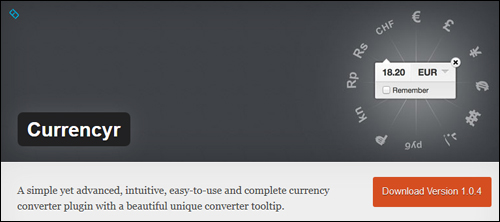
Currencyr is an intuitive, easy-to-use and complete currency converter plugin with a visually attractive converter tooltip. It’s also free to install and use on your WP website.
Great plugin features include the following:
- Inline conversion tool
- Supports a number of exchange rates providers, such as Yahoo!, Open Exchange Rates & European Central Bank
- Supports Shortcodes
- Widgetized currency table and converter
- Supports integration with a number of e-commerce plugins such as WooCommerce & Easy Digital Downloads.
- Can detect local currency automatically
- Supports full translations
Important: The Currencyr plugin requires PHP 5.3.0 or later. Do not install this plugin if you currently have an older version of PHP installed on your server. Alternatively, ask your web host to upgrade your PHP server installation.
***
You can install the Currencyr plugin from your WP dashboard by searching for “currencyr” in the Plugins section and clicking the “Install Now” button …
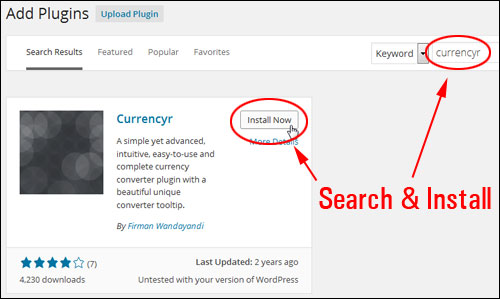
After installing and activating the plugin, you can visit the plugin’s settings area by choosing Currencyr from your WordPress administration area …
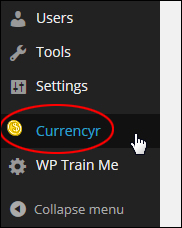
This takes you to the plugin settings section …
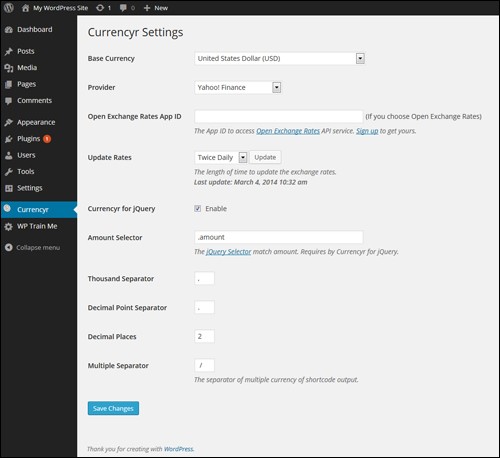
For example, you can select a base currency from a drop-down menu. The default option is ’US Dollar’ …
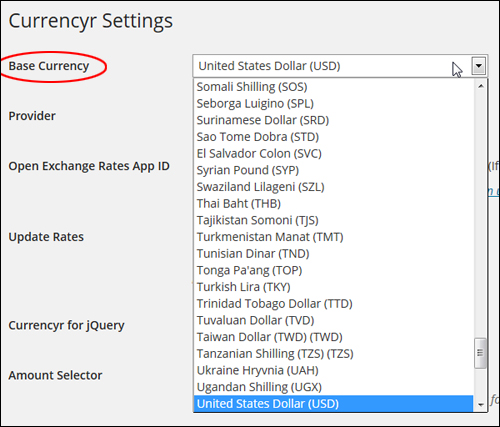
You can also choose which data provider you want to use from a dropdown menu. The default selection is Yahoo Finance, but you can select one of the other options, like European Central Bank or Google Finance …

Note: If you choose Open Exchange Rates as your provider, you will need to enter an API (Application Programming Interface) ID …

You can specify how frequently you would like the currency exchange rates to update by selecting an option from the ‘Update Rates’ dropdown menu …

The plugin uses jQuery, which lets web developers add things like animation effects to web applications (such as WP plugins).
Unless there is a reason to modify the jQuery settings, just ignore this section …

Edit the remainder of the settings and click ‘Save Changes’ when you have finished configuring this section …
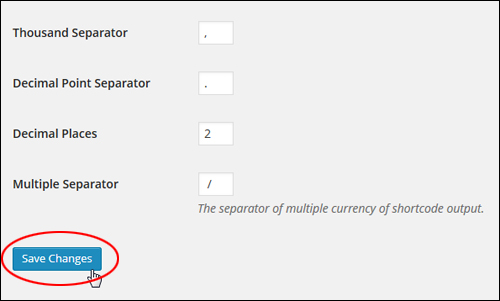
After you have configured your plugin settings, you can easily start adding currency conversion to any WordPress post using shortcodes.
Refer to the ‘Additional Plugin Notes’ section below to learn how to use currency codes (e.g. USD, NZD, CAD, etc …) in the Currencyr plugin.
Shortcodes
You can insert currency conversion into WordPress pages, posts and widgets with no coding skills or knowledge using shortcodes.
Below are some examples of currency shortcodes that you can add to pages and posts:
Let’s say that you retail goods for a set price (e.g. $175) in US Dollars (USD), and you want to show this amount converted into British pounds (GBP) on your product sales page.
All you need to do is insert the shortcode below to your post or page …

Note: You can also add amounts in dollars and cents (for example, 89.95, 47.00, 1356.87, etc …)
The example below shows how your shortcode will look once you have inserted it into your post or page …
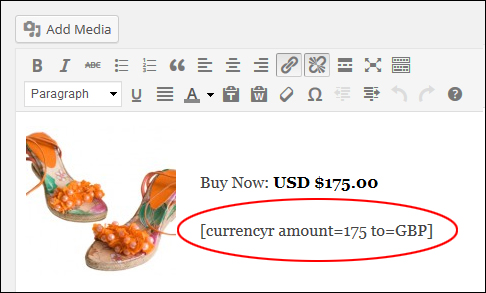
After publishing the content, the currency conversion will appear like this …
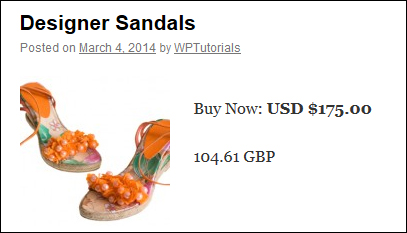
Using the above example, let’s now display the same price into multiple currency formats.
To do this, use following shortcode (you can add as many currency symbols as you like by using vertical pipes) …

You can see how the shortcode appears when you add it to your content …

Once the post has been published, your converted currency amounts will then appear like this …
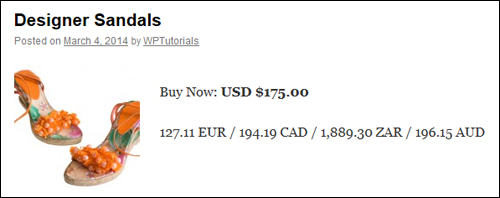
See the ‘Additional Plugin Notes’ section below to learn more about changing the currency separator symbol with the Currencyr plugin.
Now, suppose you want to use a different base currency than the one selected as the default.
For example, if you have specified your default base currency as EUR and you have a section on your site targeted to non-European customers (e.g. Australia or Canada), you can change the base currency using the following shortcode …

You can see how the shortcode looks when inserted into your content …
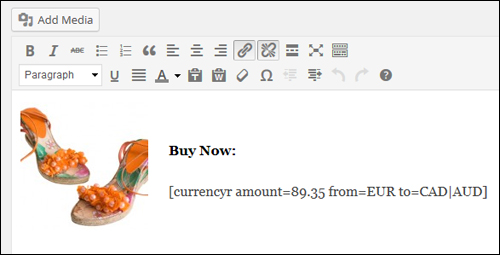
Once the post or page has been published, your currency conversion will then display as seen in the example below …
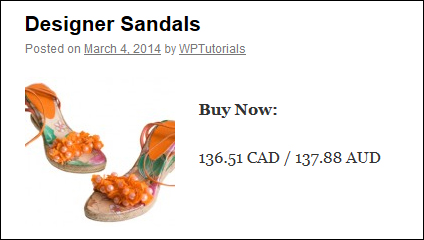
Plugin Widget
You can also add a currency converter to your site’s sidebar using a widget.
To add the currency converter to your sidebar, choose Appearance > Widgets in the WP dashboard menu …
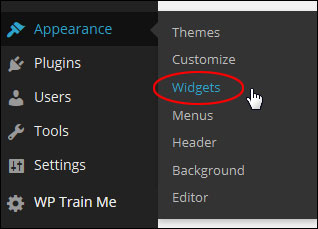
In the Widgets > Available Widgets section find the ‘Currencyr’ widget and drag it to the ‘Active Widgets’ area …
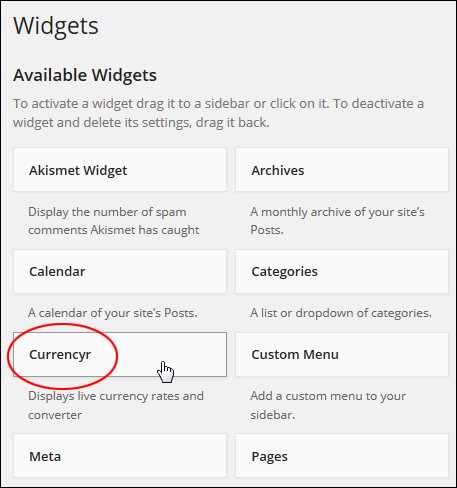
Configure the widget settings as shown in the screenshot below (add any currency codes you want displaying on your widget separated by commas), and click ‘Save’ to update your settings …
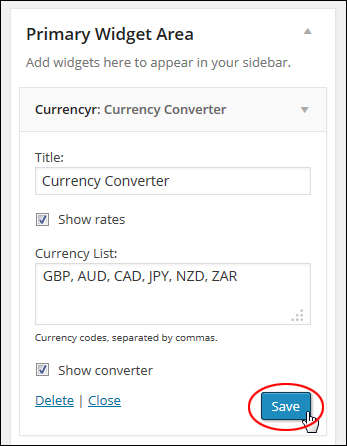
Your currency conversion tool will now appear on your site’s sidebar menu with the settings you have specified …
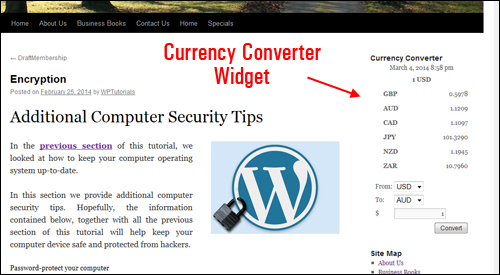
Additional Plugin Notes
Here are some additional notes and useful information about using the plugin.
Currency Separator
The Currencyr plugin allows you to specify the symbol to display as the currency separator when using several currencies.
You can change the symbol in the Multiple Separator settings section.
So, for example, entering the default symbol “/” (forward slash) …

Displays your currency values separated by the forward slash as you can see in the example below …
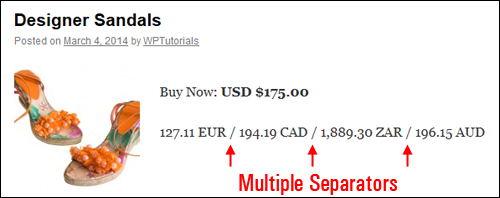
If you enter another symbol and resave your settings …

Your site visitors will see the new symbol used as the currency separator …
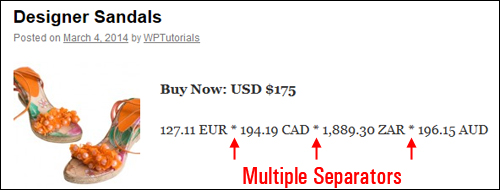
WP E-Commerce
As mentioned earlier, the plugin can be integrated with various WordPress-compatible e-commerce plugins like WooCommerce, WP-eCommerce and Easy Digital Downloads …
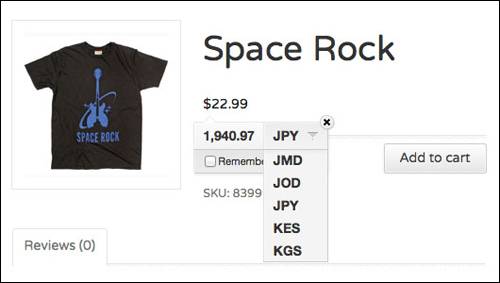
(image source: plugin site)
Congratulations! Now you can go and easily add a currency converter to your WordPress web site.
To learn more about WordPress e-commerce plugins, see the tutorial below:
***
"Learning WordPress has been a huge stumbling block for me. I've been looking for something that covers absolutely everything but doesn't cost an arm and a leg. Thank you so much ... you have just provided me with what I have been looking for! Truly appreciated!" - Tanya

